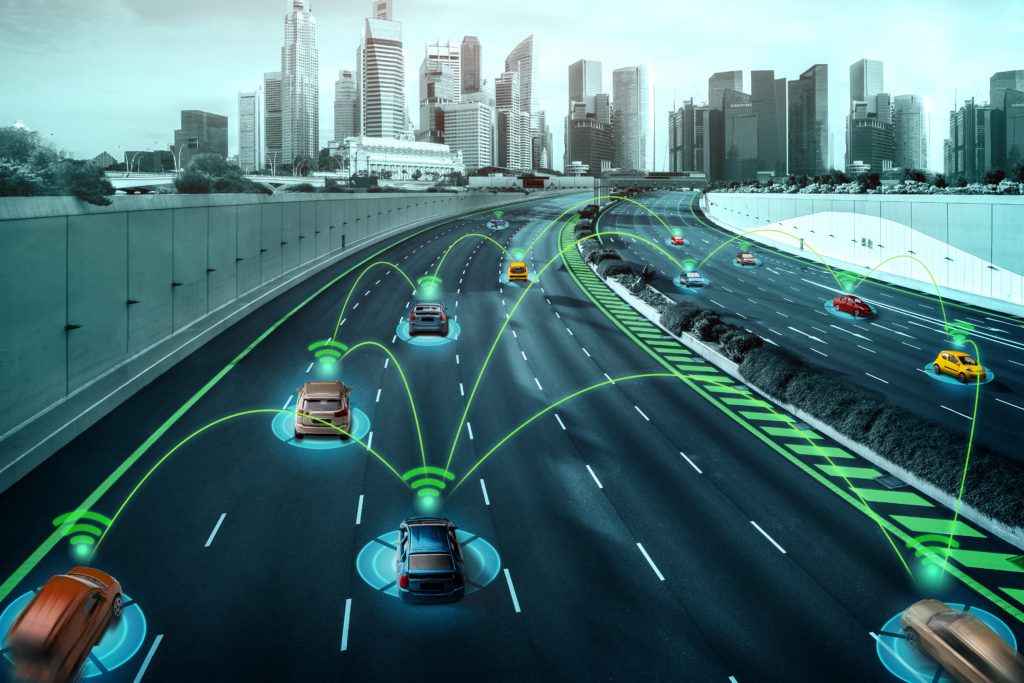“It is equally likely that companies with a low patent count might have contributions on par with the companies that declare down to the section number, or even more than them.”
 V2X, or Vehicle-to-Everything, is on the horizon to revolutionize vehicular technology by enabling interaction between vehicles and their environment. The first communication standard for V2X, IEEE 802.11p: WAVE (Wireless Access in Vehicular Environments), was standardized by IEEE (Institute of Electrical and Electronics Engineers) in 2010 for WLAN-based V2X communication. The terms DSRC (Dedicated Short Range Communication), WAVE, 802.11p, WLAN based V2X have been used by experts interchangeably to refer to this standard. Alternatively, 3GPP (3rd Generation Partnership Project) started standardization of C-V2X (Cellular-V2X) with Release 14, which was related to LTE V2X. This was followed by Release 15 with added compatibility of 5G to V2X, Release 16, adding 5G NR V2X, and Release 17 related to enhancement in 5G NR V2X and beyond.
V2X, or Vehicle-to-Everything, is on the horizon to revolutionize vehicular technology by enabling interaction between vehicles and their environment. The first communication standard for V2X, IEEE 802.11p: WAVE (Wireless Access in Vehicular Environments), was standardized by IEEE (Institute of Electrical and Electronics Engineers) in 2010 for WLAN-based V2X communication. The terms DSRC (Dedicated Short Range Communication), WAVE, 802.11p, WLAN based V2X have been used by experts interchangeably to refer to this standard. Alternatively, 3GPP (3rd Generation Partnership Project) started standardization of C-V2X (Cellular-V2X) with Release 14, which was related to LTE V2X. This was followed by Release 15 with added compatibility of 5G to V2X, Release 16, adding 5G NR V2X, and Release 17 related to enhancement in 5G NR V2X and beyond.
With such cutting-edge technology in vogue, the big names in the ICT (Information and Communication Technology) and automotive industries are flooding the patent pool with standard essential patents (SEPs). But this comes with its own share of challenges.
Isolating V2X
The first big challenge lies in the fact that V2X covers a broad set of technologies. For instance, it uses WLAN technology like DSRC (Dedicated Short Range Communication) for WLAN-based communication and cellular technology like LTE, 5G, 5GNR, etc. for cellular based communication. These technologies themselves are quite vast in terms of their application radius. Moreover, the involvement of a number of technologies encompasses a massive number of related specifications which will, for the above stated reason, involve technologies other than V2X. So, handling such complex data is in itself perplexing, not to mention the segregation and isolation of specifications exclusively dealing with V2X.
The C-V2X evolution expands through a series of releases by 3GPP maintaining backward compatibility. This means that Rel-14 C-V2X has a strong evolution to 5G NR-based C-V2X, which can augment Rel-14 with complementary as well as new capabilities while maintaining backward compatibility. This clearly indicates that 5G C-V2X will not replace LTE C-V2X, rather they both will co-exist. In addition, 5G NR C-V2X will coexist with LTE-V2X in 5.9 GHz band but is envisioned to use different channels. For instance, 5GAA has proposed 40 MHz for “Advanced C-V2X” in addition to 20 MHz for “Basic C-V2X”. This indicates that V2X is not an exclusive technology; it is not only dependent on individual technologies but also on the coexistence of technologies like LTE and 5G. Accordingly, there cannot be V2X exclusive division and determination.
If one examines the ETSI declaration sheet, they will see that it broadly involves columns like Patent No., Assignee, Title of the patent, and the Specification related to which the patent is being declared. Many such technical specifications apply to broader technologies, as the related specifications are not entirely relevant to V2X. On further analysis of the ETSI declaration data, we see that in many technical specifications, there are only some sections that are relevant to V2X. This results in V2X related specifications being categorized into “specifications with all sections relevant to V2X” and “specifications with particular sections relevant to V2X”.
The following specifications include all sections relevant to V2X:
TS22.185, TS22.186, TS23.285, TS23.286, TS23.287, TS23.303, TS24.334, TS24.385, TS24.386, TS24.486, TS24.587, TS24.588, TS29.343, TS29.344, TS29.345, TS29.388, TS29.389, TS29.486, TS33.185, TS33.536, TS36.440, TS36.441 and TS36.442.
Alternatively, the following specifications include at least one section relevant to V2X:
TS36.101, TS36.133, TS36.211, TS36.212, TS36.213, TS36.214, TS36.300, TS36.302, TS36.304, TS36.306, TS36.321, TS36.331, TS36.508, TS36.509, TS36.521-1, TS38.101-1, TS38.101-3, TS38.101-4, TS38.133, TS38.202, TS38.211, TS38.212, TS38.213, TS38.214, TS38.300, TS38.304, TS38.306. TS38.321 and TS38.331.
For example, TS36.101 has sections 4, 5, 6, 7, 11, 12, 14 related to V2X; TS36.133 has 7, 9, 11, 12, 13 related to V2X; TS36.211 has only section 9 related to V2X; and so on. Thus, the challenge lies in identifying the specifications and subsequently detecting the sections related to V2X.
In addition, the ETSI declaration sheet contains an exclusive column of “Illustrations” where the declarer can mention the specific section numbers against the specification being declared. This is equivalent to saying that the declarer has declared with specificity to the section number. Since V2X technology involves specifications that also cover other technologies apart from V2X, declaration specificity to the section numbers holds considerable weight, as it is the deciding factor for computing patents relevant to V2X. This creates two types of declarers – those that specify at a very high frequency the section numbers of specification as a part of their declaration practice and others that only specify the specification and not the specific section.
The above variation in the declaration practice of SEP holders poses a serious challenge. Particularly, as per an assessment of the ETSI data, companies like Intel, Apple, Nokia, SHARP Corporation, NTT Docomo, Ericsson, Sony, NEC, Fujitsu, and HTC declare with high specificity, over 70%, to the section number. If, for example, the specificity percentage of Intel is 72% then this means that out of every 100 patents declared by Intel, 72 patents are declared down to section numbers. Since section number declaration is significant when computing V2X patents, as explained above, the patent count for such companies will be high. On the other hand, the specificity declaration percentage is below 20% for companies like Qualcomm, ZTE, LG, Huawei, OPPO, Sony, CATT, and Samsung. Of every 100 patents declared for these companies, less than 20 patents are declared with respect to section numbers.
If we compare the companies in both categories, the patent count will be high for companies that specify section numbers and comparatively low for the companies that only specify the specification. Nonetheless, the resultant low patent count for companies not specifying section numbers does not necessarily mean that they hold a comparatively low number of patents relevant to V2X. It is equally likely that companies with a low patent count might have contributions on par with the companies that declare down to the section number, or even more than them. In fact, it has been found that these companies are equally active in the sphere of V2X with a lot of patents in their portfolios. The only setback is they do not specify section number when declaring their patents, which requires manual research. Hence, V2X SEP holders cannot be accurately determined from the ETSI declaration data alone.
Solutions
There are several possible solutions for dealing with the challenges encountered in determining V2X SEP holders. One is that an assumption could be made that companies not specifying specification section numbers in their patent declarations might have proportionally as high a number of C-V2X patents as the companies specifying the section numbers of the specification. The companies that have declared their patents with specificity to 3GPP like Intel, Ericsson, Apple, NTT Docomo, NEC, Fujitsu, and Sony represent well, and thus serve as a good proxy for, the level of the telecommunications industry’s interests and participation in the standardization of C-V2X. Another way out is to manually examine the claims of the patents to verify if a patent is related to V2X or not. The latter is a dependable method, but time consuming, while the former is much faster but works on approximation. The technique you choose should be based on the availability of time and resources.
Image Source: Deposit Photos
Image ID:406046480
Copyright:BiancoBlue

![[IPWatchdog Logo]](https://ipwatchdog.com/wp-content/themes/IPWatchdog%20-%202023/assets/images/temp/logo-small@2x.png)

![[Advertisement]](https://ipwatchdog.com/wp-content/uploads/2024/04/UnitedLex-May-2-2024-sidebar-700x500-1.jpg)
![[Advertisement]](https://ipwatchdog.com/wp-content/uploads/2024/04/Artificial-Intelligence-2024-REPLAY-sidebar-700x500-corrected.jpg)
![[Advertisement]](https://ipwatchdog.com/wp-content/uploads/2024/04/Patent-Litigation-Masters-2024-sidebar-700x500-1.jpg)

![[Advertisement]](https://ipwatchdog.com/wp-content/uploads/2021/12/WEBINAR-336-x-280-px.png)
![[Advertisement]](https://ipwatchdog.com/wp-content/uploads/2021/12/2021-Patent-Practice-on-Demand-recorded-Feb-2021-336-x-280.jpg)
![[Advertisement]](https://ipwatchdog.com/wp-content/uploads/2021/12/Ad-4-The-Invent-Patent-System™.png)






Join the Discussion
2 comments so far.
Bikram
September 2, 2022 09:11 amInteresting point, Kent. It seems though that a thorough review is being done and the essentiality of the patent is checked before submission to the ETSI. To confirm that, an exclusive analysis on a sample set can be run to compare the probability of declared SEP with specificity to a section as essential with the SEP declared to a general standard.
Kent Baker
August 30, 2022 05:21 pmOf course, the fact is that even if a patent is declared a SEP, it does not mean that it indeed is a SEP. It would be interesting to read if there is any correlation between SEP-ness and patents declared by section numbers as compared to SEP-ness and patents not declared by section numbers (just a general standard.) Do companies that take the time to declare with specificity to a section do a better job of determining SEP-ness prior to filing?